Some years back, I watched a discussion unfold on social media about the devil. A Catholic woman anxiously asked her friends for prayers that could be used to “banish” and “bind” Satan. Her lights had been flickering, she said, and she feared a demon was responsible.
In her autobiography, St. Teresa of Ávila, the first woman doctor of the church, commented, “I am really much more afraid of those people who have so great a fear of the devil than I am of the devil himself.” Satan, she noted, cannot act unless God permits it, but devil-frightened humans can cause great harm, especially if they are in positions of influence
The church teaches that the devil is a fallen angel and that angels are creatures. Unlike humans, they have no bodies. As spirits, angels aren’t hindered by two things that limit humans: time and change. As embodied creatures, humans don’t possess all the world’s knowledge at once. They learn throughout their lifetimes. Changes to their material bodies can hinder their ability to know fully and to choose freely.
This explains why the Catechism of the Catholic Church states that “it is the irrevocable character of their choice, and not a defect in the infinite divine mercy, that makes the angels’ sin unforgivable.” Satan knew what he was doing and freely chose to turn away from God.
The church hasn’t defined the precise nature of the sin of the angels other than to say it involved rejecting God. The catechism references the devil’s temptation of humanity, suggesting that the sin of the fallen angels may have been a desire to usurp God. Jesus called Satan “a murderer from the beginning” and “the father of lies” (John 8:44). If we remember that angels have no bodies, the implication is that Satan destroys souls through deception.
If St. Teresa is correct that Satan can’t act without God’s permission, why would God permit the devil to tempt us?
According to the catechism, God created humans to have free will so they could live in friendship with God. Without free will, there’s no capacity for love between the Creator and God’s creatures.
Since Jesus himself calls out Satan as a liar and a murderer, it makes sense for Christians to take the devil seriously. But what do we do about Christians who overemphasize the devil’s activity? Who, perhaps, try to “scare the devil” out of us with their scrupulous fear of all things diabolical?
First, of course, should be compassion. Scrupulosity is a difficult spiritual problem. Those who experience it are often wracked with obsessive thoughts they can’t easily dismiss. Prayer for someone dealing with scruples is certainly warranted, as are, perhaps, gentle suggestions to seek help from a physician or mental health professional (something the church urges as an initial step for anyone believed to be experiencing spiritual attacks).
For oneself, the saints have long recommended the importance of developing spiritual discernment. St. Ignatius of Loyola, founder of the Jesuits, created his Spiritual Exercises to form Christians in discernment. Pope Francis, a Jesuit himself, recommends prayer for discernment, which will in turn open a Christian to recognizing the voice of Christ.
—Michelle Arnold
As Michelle Arnold points out in her essay above, St. Teresa of Ávila was wary of people who obsess over fear of the devil. St. Teresa did not argue against belief in the devil, but rather advised caution when diagnosing evil and its origins. As Arnold points out, “spiritual discernment” is needed to keep Christians from succumbing to irrational beliefs disconnected from a solid
moral foundation.
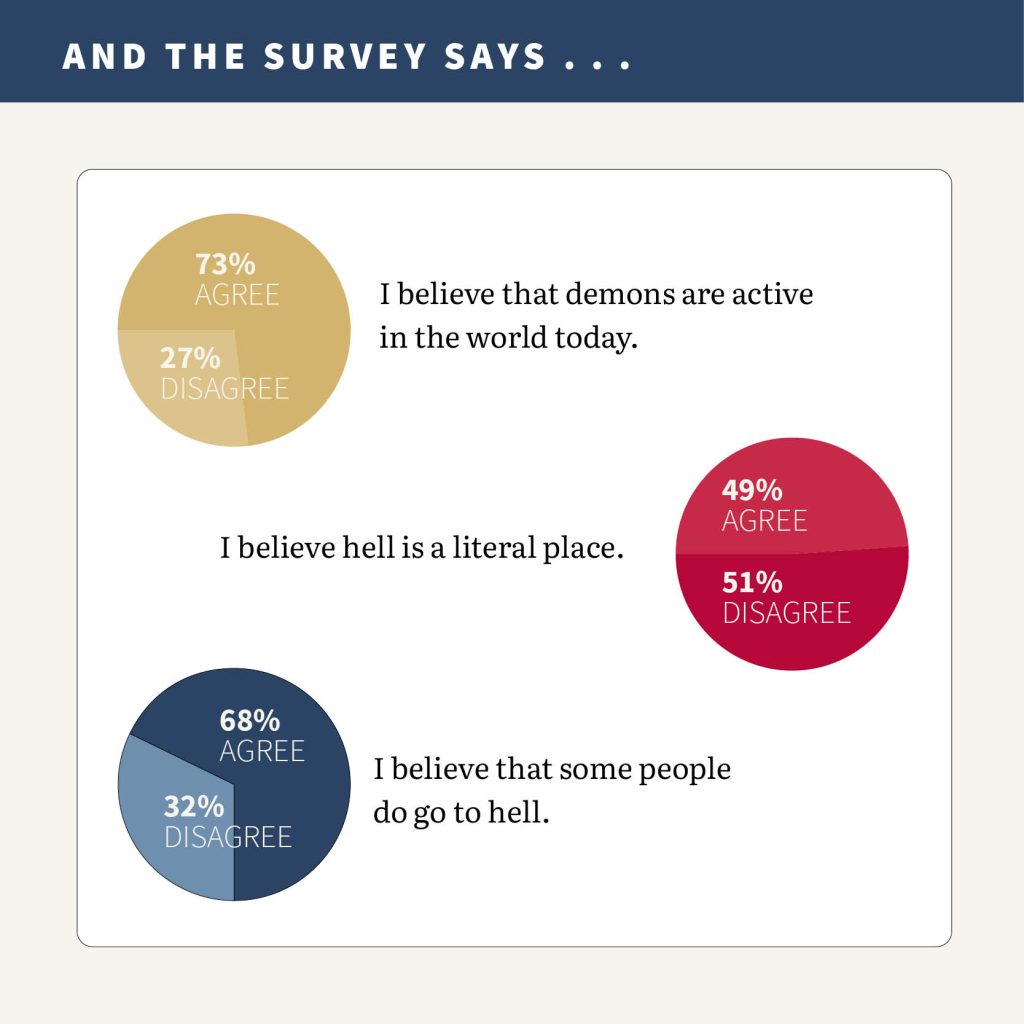
Today, over 400 years after the death of St. Teresa and despite widespread secularism, Catholics haven’t stopped believing in Satan, demons, and evil powers. But, to judge from the results of U.S. Catholic’s recent survey, what people believe about Satan may vary greatly.
While many Catholics think of the devil as a metaphor or idea, others view Satan as a real being active in human history. In the U.S. Catholic survey, 60 percent of respondents disagreed with the idea that “the devil is not a literal being but rather a symbol of evil.” And 70 percent said they believe that the devil is “an active force in the world.”
Many stated that they believe in a literal Satan who tempted a literal Eve in Eden, who made Job’s life miserable to test his faith, and who tempted Jesus in the desert. For many U.S. Catholic readers, devilish activity is not a curiosity of the remote past, either: Seventy-five percent said it is important to protect against the devil’s temptations, and 54 percent believe it is possible to make a deal with the devil.
As to who or what this literal devil is, views also differ. Kevin Ganey of Quincy, Massachusetts, states that the devil is a “fallen angel actively opposing God.” Deb Keenan, of Hamburg, New York, sees the devil as an “evil spirit that preys upon the weaknesses of people.”
When it comes to picturing Satan, the arts and pop culture have given us an array of images to choose from. One U.S. Catholic reader says they envision the devil as the “painting that Dorian Gray had in his attic.” Some favorite creative representations of Satan for survey respondents include Lucifer in Paradise Lost, the devil in The Passion of the Christ, and Morgoth in J.R.R. Tolkien’s The Silmarillion.
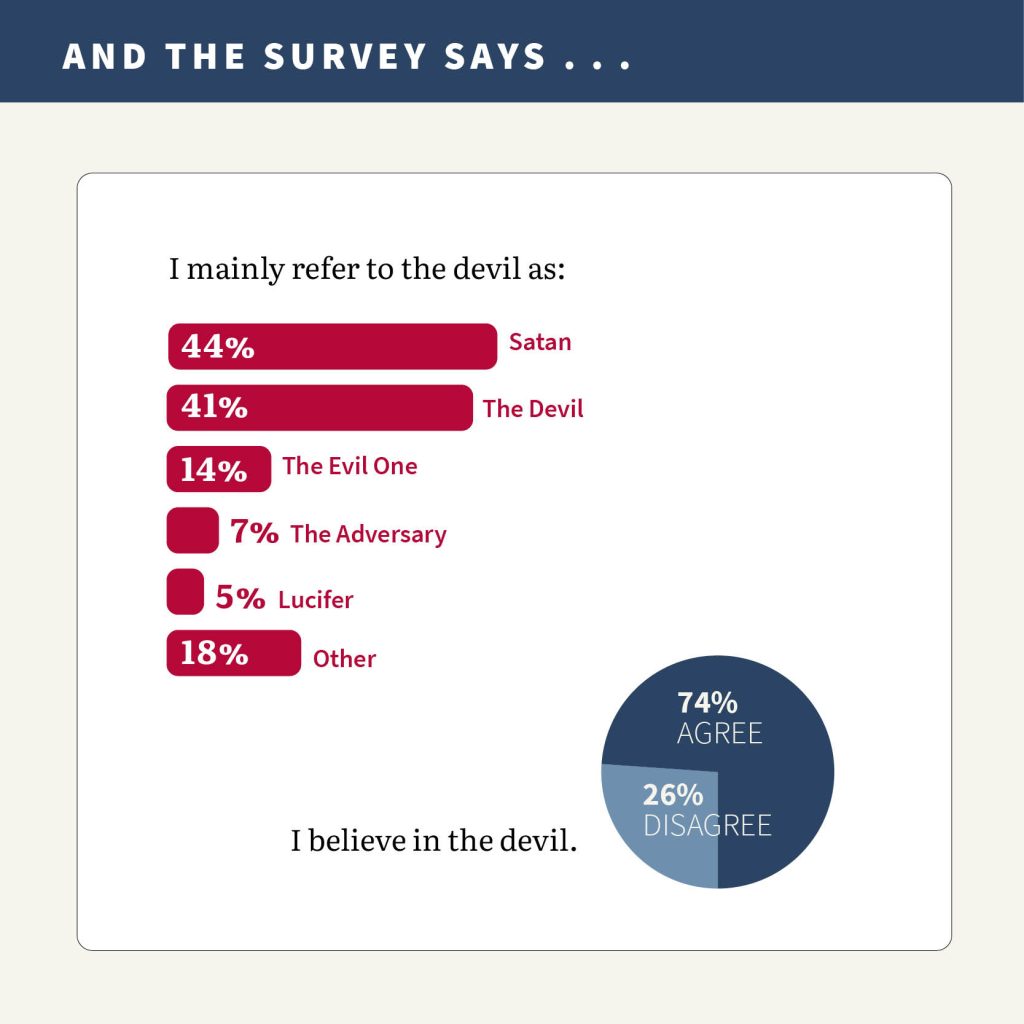
While certain beliefs in Satan may seem far-fetched, it is a fact that evil and suffering are present in this world. Greg S. of Chicago sees the influence of the demonic in “the fact that 84 percent of transgender individuals who consider Catholicism an important part of their life attempt suicide.” Kevin of Colorado Springs, Colorado, sees evil at work in “hateful politics. Putting profits over people. Ignoring the suffering of the poor.”
Neither religion nor philosophy has yet provided an adequate explanation for why the world experiences such suffering, so it makes sense that people would look for a malignant power behind the curtain. For instance, William Bundy of Brooklyn, Ohio, explains that he believes the devil is a real being because of his observations of “the suffering of friends and family caused by his evil deceptions.”
What makes less sense is when people fall into the trap St. Teresa talks about and start looking for demons around every corner. In the past few decades, Christians have panicked about possible demonic activity in rock music, goth fashions, the practice of yoga, and young adult novels such as the Harry Potter series. At the same time many people have ignored or even enabled real evil such as systemic racism, the clergy abuse crisis, the marginalization of LGBTQ people, and an unjust capitalist system that steals from workers. Whether one believes in a literal Satan or not, this misdirection does look like evidence for evil forces luring the faithful from working for the kingdom of heaven.
—Rebecca Bratten Weiss
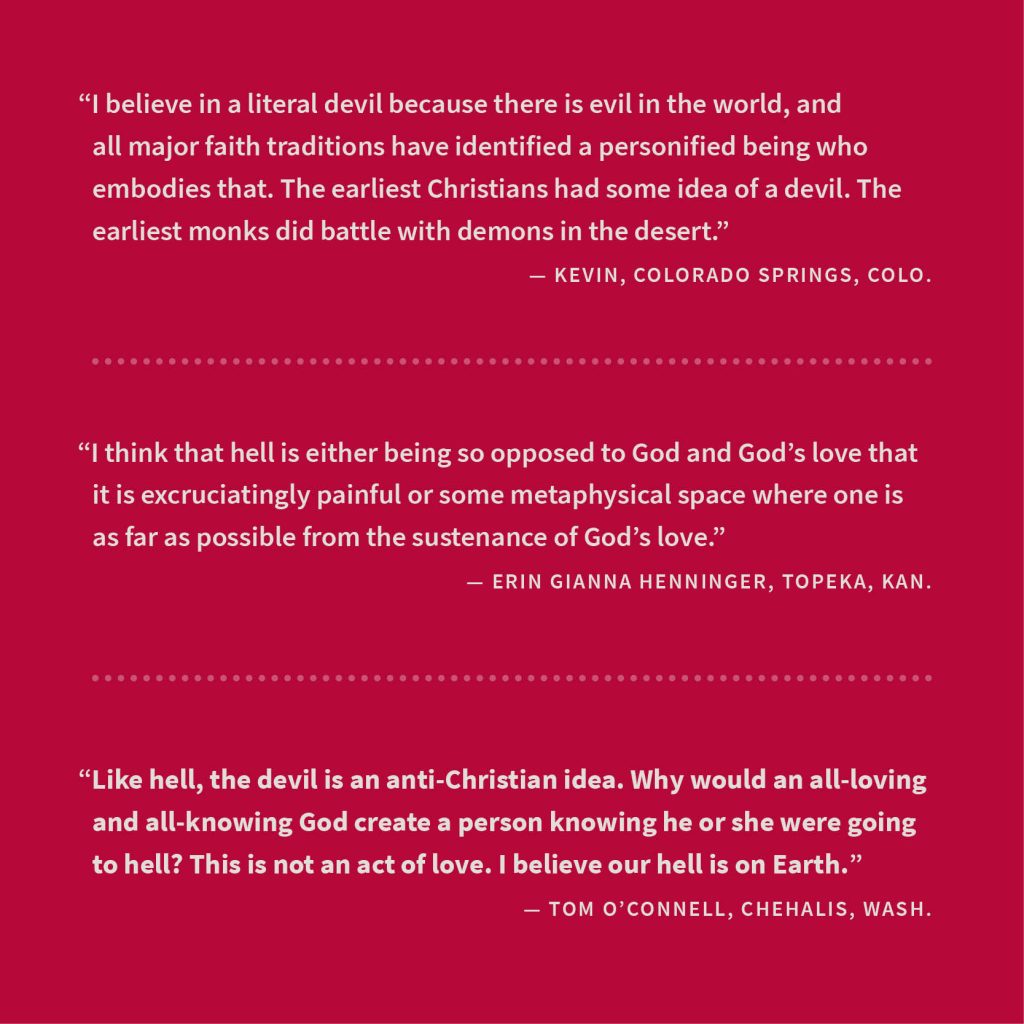
Results are based on survey responses from 126 uscatholic.org visitors.
This article also appears in the November 2023 issue of U.S. Catholic (Vol. 88, No. 11, pages 31-35). Click here to subscribe to the magazine.
Image: Fresco of Hell, Camposanto Monumentale of Pisa, Italy, Wikimedia Commons


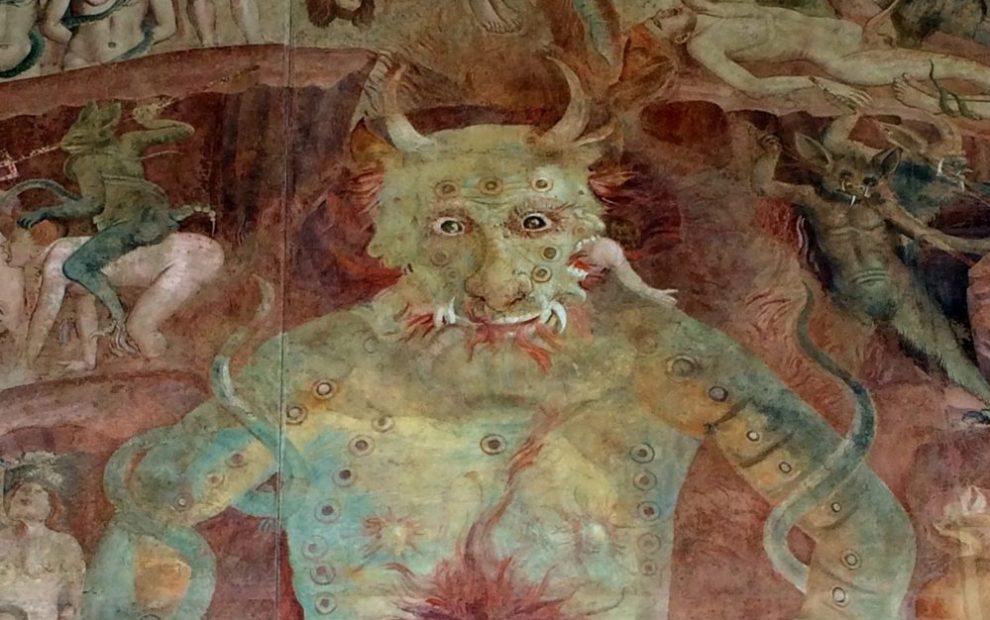





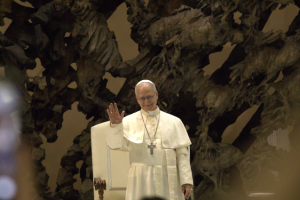






Add comment